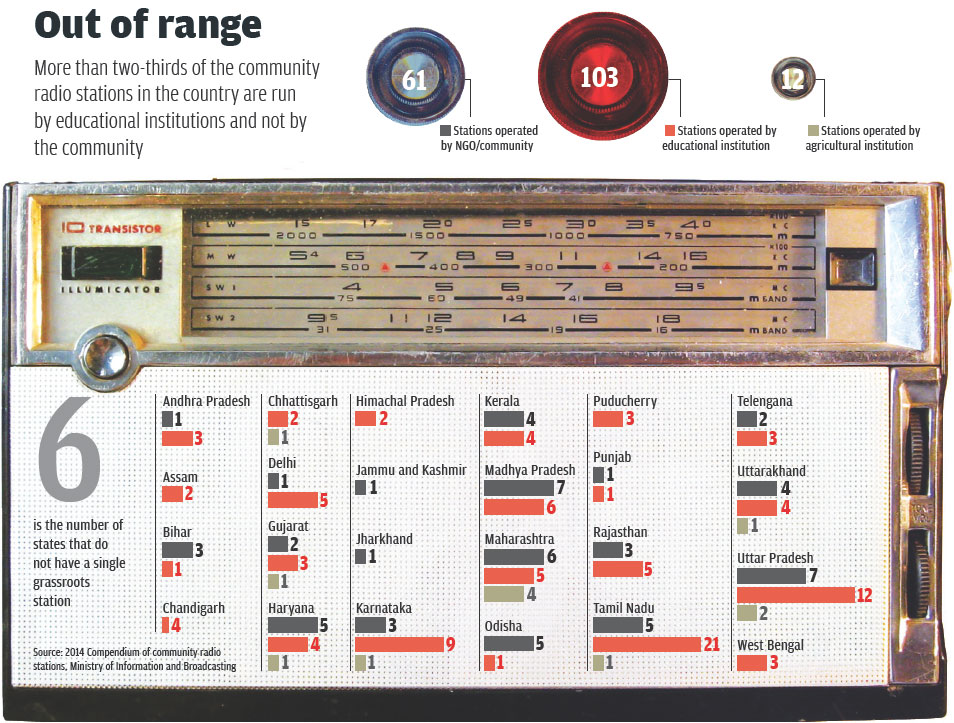Here is an interesting piece from the Down to Earth news site about the state of community radio in India. DTE is a fortnightly magazine on science and the environment. Author Anupam Chakravartty notes with disappointment that India, a huge radio loving country (especially during elections), has only 173 community radio stations, all told. In addition, he complains that universities or schools run most of them. Independent community based organizations only supervise 63, and most of these broadcast to remote rural areas.
“This is a fundamental problem because the issues that are important to a community and an educational institution are different and as a result the content has to be different,” Chakravartty contends, citing concerns that, as a consequence, “local participation in content generation largely remains missing.”
Why does India lag in community radio station development? The essay interviews communications professor Vinod Pavarala of the University of Hyderabad:
“The first reason is the elaborate bureaucratic procedures that have been put in place for licensing. The government has to simplify the procedures and create a single-window system. The second issue that needs a re-look is the continued ban on broadcast of news. What is community radio without news? At present, a public interest litigation is under way on the issue and hopefully the Supreme Court will permit broadcast of news soon. The third issue is the policy saying that no content of political nature shall be broadcast. Of course, the policy does not define politics. But politics is increasingly becoming local.”
No “content of [a] political nature” is allowed on Indian community radio stations? It sounds like that country’s broadcast regulatory system is stuck in a old school BBC mindset, circa 1925 or so; or perhaps commercial and state broadcasters have demanded this provision? This graphic below surveys Indian community radio on a state-by-state level (click it for a bigger version):




